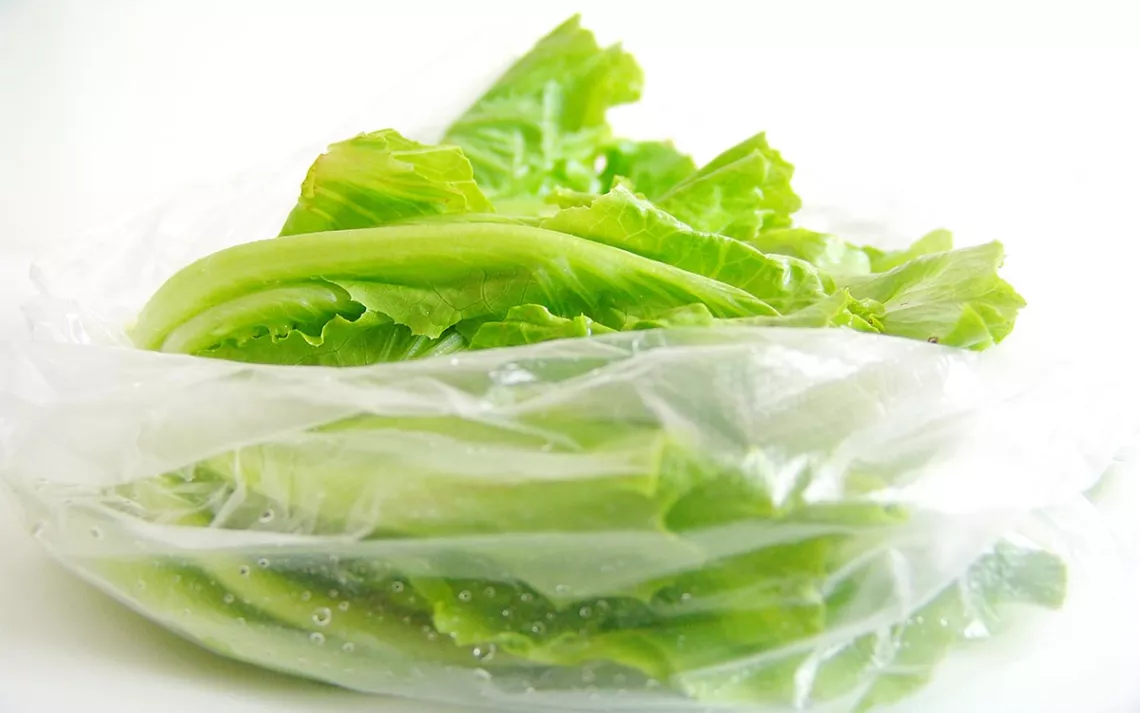Is Deregulation to Blame for the Most Recent E. Coli Outbreak?
Farmers don’t have to test their irrigation water for pathogens. That’s a problem.

Photo by Yoyochow23/iStock
Anyone planning to pair their turkey and gravy with a salad during last week's Thanksgiving was in for a shock. Just two days before the largest food holiday of the year, the Centers for Disease Control and Prevention issued a statement advising Americans to discard all romaine lettuce, or any lettuce mixes that might contain it, and then to wash their refrigerator with bleach. The unusually broad advisory came in response to the latest E. coli outbreak, which sickened 43 people in 12 states and 22 people in Canada.
Why did the advisory have to be so wide ranging? The CDC and the Federal Food and Drug Administration have still not been able to pinpoint exactly where the contaminated lettuce originated, though on November 26, the agencies announced that investigators had narrowed it down to the coastal growing regions of northern and central California. The FDA and the CDC now say that romaine lettuce grown elsewhere is safe to eat, but if consumers don’t know where their romaine lettuce comes from, they should still throw it out.
The advice probably applies to most people, since salad products aren’t usually labeled with this information. That’s about to change. In the same November 26 statement, the FDA announced that producers and distributors have agreed to start labeling romaine lettuce with the harvest location and date and “that such labeling will continue into the future and become the standard for their products.” The statement goes on to say, “This can improve the ability of the FDA to provide more targeted information to consumers in the event of a future outbreak of illness.”
The ability to quickly identify where contaminated produce comes from is an important step in better protecting consumers, but it does little to prevent the contamination from happening in the first place. Large-scale E. coli outbreaks linked to lettuce production have been a recurring problem over the past decade. Between 2006 and 2018, there have been more than 20 of them associated with leafy greens. A prolonged episode in spring 2018 sickened at least 200 people in 36 states and killed five. Investigators eventually traced the source of contamination to Yuma, Arizona, where a canal close to lettuce farms tested positive for the same strain of E. coli that caused the illnesses.
Tainted irrigation water has frequently been implicated in E. coli outbreaks, but growers are not required to test it for pathogens. Under the Obama administration, the FDA sought to rectify this by putting in place water-testing rules that were set to go into effect this year. But the FDA under the Trump administration opted to delay those rules by at least four years, falling in line with other government agencies responding to President Trump’s executive order in January 2018 to reduce regulations.
According to the FDA’s own analysis, while delaying the water-testing rules would save growers $12 million per year, it would cost consumers $108 million per year in medical expenses. But E. coli outbreaks like the two that have occurred this year also take a huge financial toll on growers. Michael Droke, a lawyer who works in agriculture and cooperative law, told the Western FarmPress that the most recent advisory will result in enormous losses for producers and distributors. “This comes at a difficult time for the industry generally because it happened right before a big holiday weekend,” Droke said. “It’s particularly hard on farmers and suppliers given the timing.”
Droke also said that it can take six to 12 months for demand to return to normal, bolstering the argument that a food-safety system unhampered by regulations is in no one’s best interest.
 The Magazine of The Sierra Club
The Magazine of The Sierra Club



